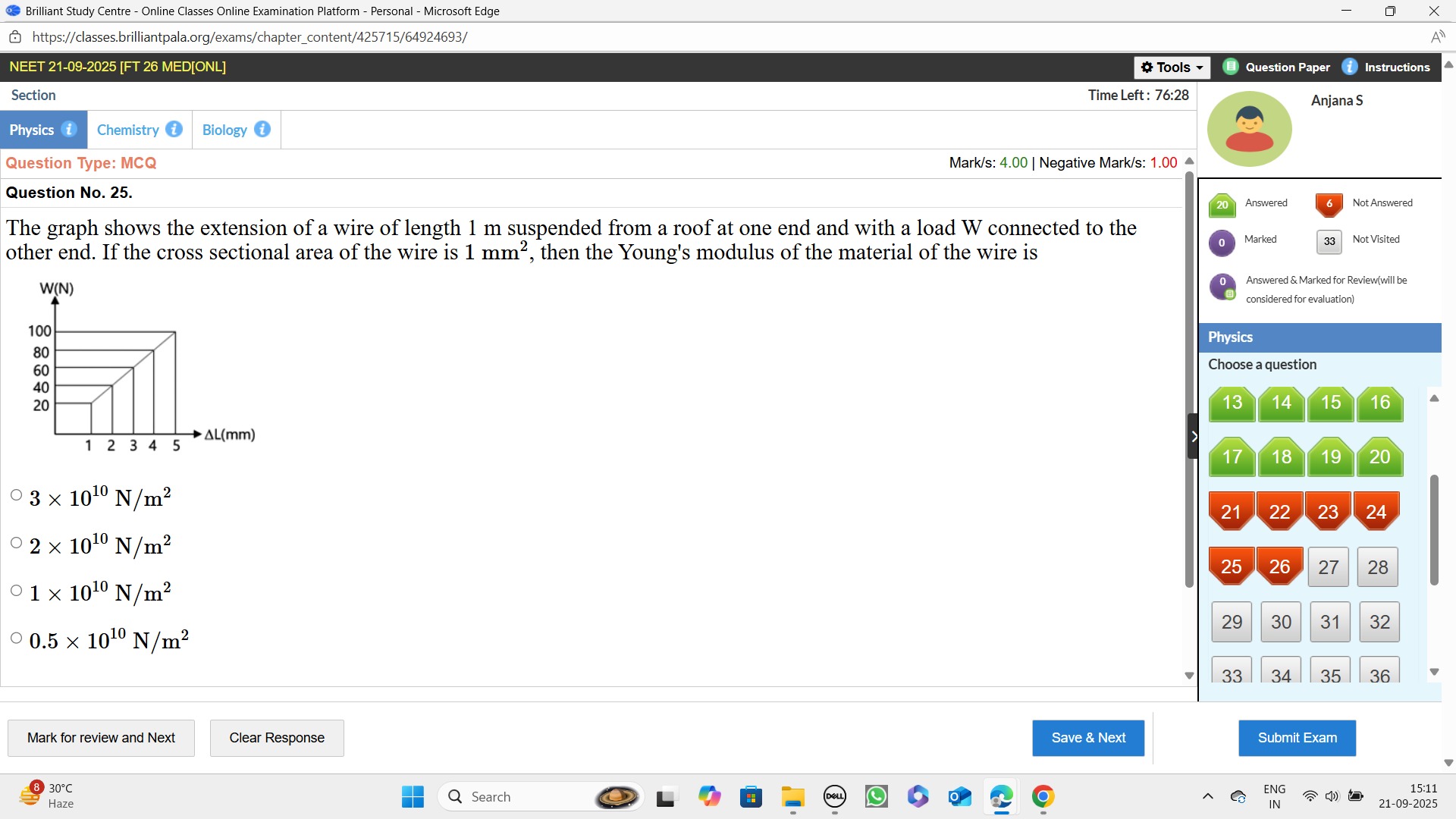Question
Question: The graph shows the extension of a wire of length 1 m suspended from a roof at one end and with a lo...
The graph shows the extension of a wire of length 1 m suspended from a roof at one end and with a load W connected to the other end. If the cross sectional area of the wire is 1mm2, then the Young's modulus of the material of the wire is

A
3×1010N/m2
B
2×1010N/m2
C
1×1010N/m2
D
0.5×1010N/m2
Answer
2×1010N/m2
Explanation
Solution
Young's modulus (Y) is defined as the ratio of stress to strain: Y=StrainStress where Stress =AF and Strain =LΔL. Thus, the formula for Young's modulus is: Y=A⋅ΔLF⋅L From the given graph, we can pick a point. Let's choose the point where the load W=100 N and the extension ΔL=5 mm. Given:
- Original length of the wire, L=1 m.
- Cross-sectional area of the wire, A=1 mm2. Convert to m2: A=1×(10−3 m)2=1×10−6 m2.
- Load, F=W=100 N.
- Extension, ΔL=5 mm. Convert to m: ΔL=5×10−3 m.
Substitute these values into the Young's modulus formula: Y=(1×10−6 m2)⋅(5×10−3 m)(100 N)⋅(1 m) Y=5×10−9100 N/m2 Y=20×109 N/m2 Y=2×1010 N/m2
